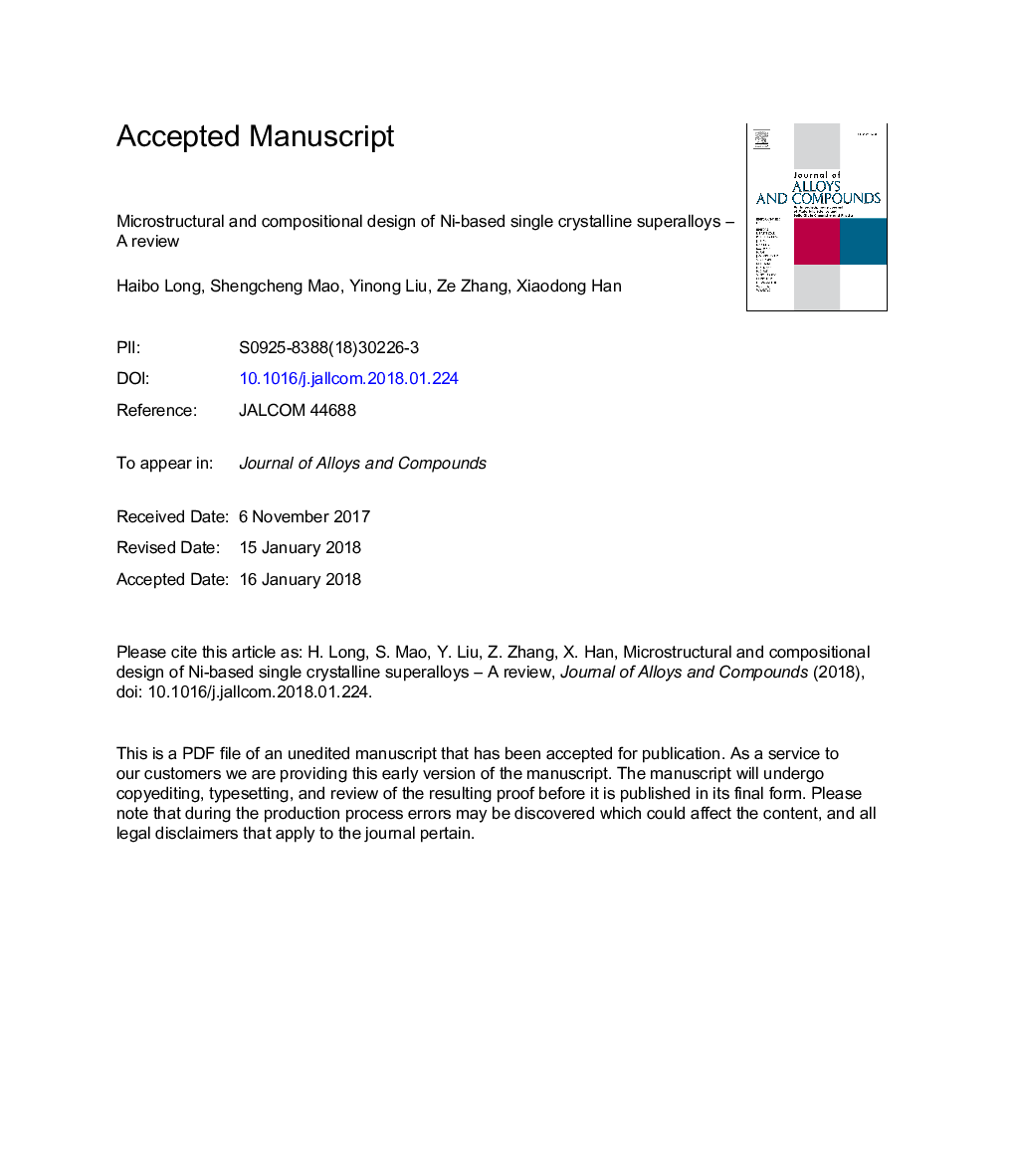| Article ID | Journal | Published Year | Pages | File Type |
|---|---|---|---|---|
| 7993129 | Journal of Alloys and Compounds | 2018 | 34 Pages |
Abstract
The microstructure, thermal and mechanical stability of Ni-based single crystalline superalloys depend strongly on the alloying elements and their concentrations. Alloying has been the main design strategy for stabilizing the compositions, microstructures and thermal-mechanical properties. This article presents a review on the effects of some common alloying elements on the microstructural and mechanical property stability control of Ni-based superalloys. The various alloying elements are divided into four categories according to their main effects on these properties, comprising base elements, mechanical strengthening elements, long term stability elements and the oxidation resistance elements. The mechanical strengthening elements can further be divided into precipitation, solid solution and grain boundary segregation elements. The precipitation elements strengthen the alloys by forming the L12 structured γʹ phase. The solid solution elements strengthen primarily the γ phase, by increasing the solidus temperatures and decreasing the stacking fault energy, which in turn influences the thermal stability of the phases and the resistance of dislocation movement. The grain boundary elements strengthen the alloys by the formation of carbides and borides along the grain boundaries during solidification, which help to prevent the formation of casting pores and hot tearing and to strengthen low angle boundaries. The long-term stability elements inhibit the precipitation of topologically closed-packed phases causing deterioration of the mechanical properties. The oxidation resistance element, mainly Al, promotes the formation of protective Al2O3 surface layer.
Related Topics
Physical Sciences and Engineering
Materials Science
Metals and Alloys
Authors
Haibo Long, Shengcheng Mao, Yinong Liu, Ze Zhang, Xiaodong Han,
